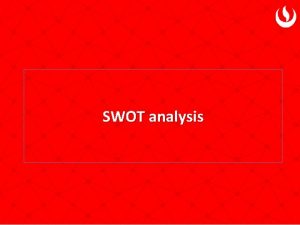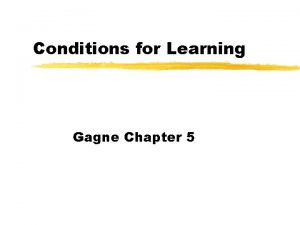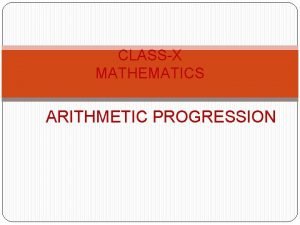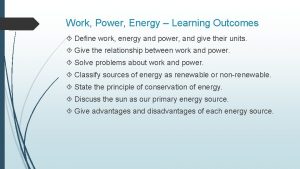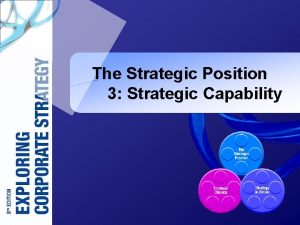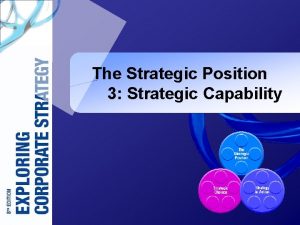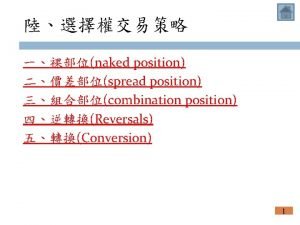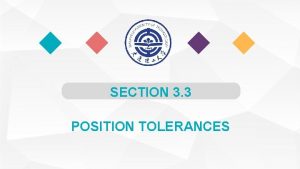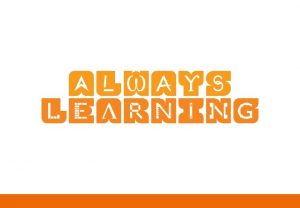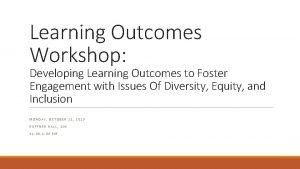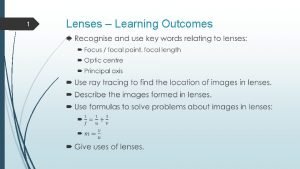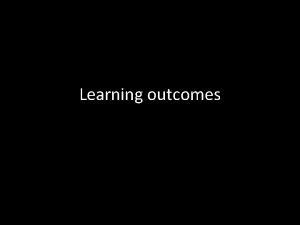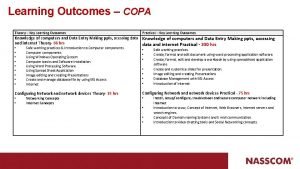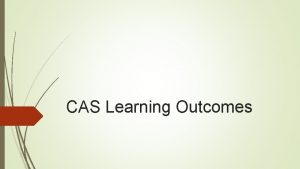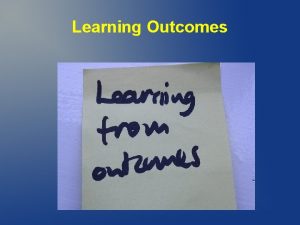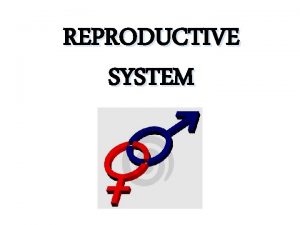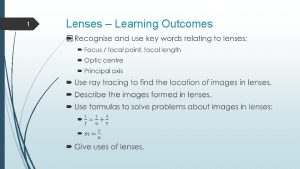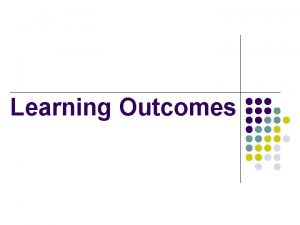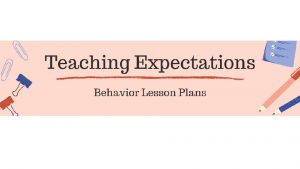The Strategic Position 4 Strategic Purpose Learning Outcomes




























- Slides: 28

The Strategic Position 4: Strategic Purpose

Learning Outcomes (1) £ Identify the components of the governance chain of an organisation £ Understand differences in governance structures across the world and the advantages and disadvantages of these £ Identify differences in the corporate social responsibility stances taken by organisations and how ethical issues relate to strategic purpose Exploring Corporate Strategy 8 e, © Pearson Education 2008 4 -2

Learning Outcomes (2) £ Undertake stakeholder analysis as a means of identifying the influence of different stakeholder groups in terms of their power and interest £ Consider appropriate ways to express the strategic purpose of an organisation in terms of statements of values, vision, mission, or objectives Exploring Corporate Strategy 8 e, © Pearson Education 2008 4 -3

Exhibit 4. 1 Influences on Strategic Purpose Governance structure Strategic Purpose Corporate values Mission Objectives Social responsibility and ethics Exploring Corporate Strategy 8 e, © Pearson Education 2008 Stakeholder expectations 4 -4

What are Stakeholders? Stakeholders are those individuals or groups who depend on an organisation to fulfil their own goals and on whom, in turn, the organisation depends. Exploring Corporate Strategy 8 e, © Pearson Education 2008 4 -5

What is Corporate Governance? Corporate governance is concerned with the structures and systems of control by which managers are held accountable to those who have a legitimate stake in an organisation. Exploring Corporate Strategy 8 e, © Pearson Education 2008 4 -6

Exhibit 4. 2 The Chain of Corporate Governance Exploring Corporate Strategy 8 e, © Pearson Education 2008 4 -7

Issues Highlighted by the Governance Chain £ To whom are executives responsible? £ Who are the shareholders? £ What is the role of institutional investors? £ What means of scrutiny and control exist? Exploring Corporate Strategy 8 e, © Pearson Education 2008 4 -8

Reasons for Imperfect Operation of the Governance Chain £ Lack of clarity on end beneficiaries £ Unequal division of power £ Different levels of access to inform £ Self-interest among agents £ Measures and targets reflect agent selfinterests rather than those of end beneficiaries Exploring Corporate Strategy 8 e, © Pearson Education 2008 4 -9

Exhibit 4. 3 Benefits and Disadvantages of Governance Exploring Corporate Strategy 8 e, © Pearson Education 2008 4 -10

Guidelines for Boards £ Operate independently of management £ Be competent to scrutinise the activities of management £ Have time to do job properly £ Behave appropriately given expectations for trust, role fluidity, collective responsibility, and performance Exploring Corporate Strategy 8 e, © Pearson Education 2008 4 -11

Ownership Choices Private or public ownership of equity Sale of all or part Acquisition Mutual ownership and partnership Privatisation Exploring Corporate Strategy 8 e, © Pearson Education 2008 4 -12

What is Corporate Social Responsibility? Corporate social responsibility (CSR) is concerned with the ways in which an organisation exceeds its minimum obligations to stakeholders specified through regulation. Exploring Corporate Strategy 8 e, © Pearson Education 2008 4 -13

Stances on Social Responsibility Laissez-faire Enlightened self-interest Forum for stakeholder interaction Shaper of society Exploring Corporate Strategy 8 e, © Pearson Education 2008 4 -14

Exhibit 4. 6 TI’s Approach to Ethics Is the action legal? Does it comply with values? Will you feel bad? How would it look in newspaper? Do you know it is wrong? Are you sure? Exploring Corporate Strategy 8 e, © Pearson Education 2008 4 -15

Exhibit 4. 7 Stakeholders of a Large Organisation Exploring Corporate Strategy 8 e, © Pearson Education 2008 4 -16

What is Stakeholder Mapping? Stakeholder mapping identifies stakeholder expectations and power and helps in understanding political priorities. Exploring Corporate Strategy 8 e, © Pearson Education 2008 4 -17

Exhibit 4. 9 The Power/Interest Matrix Exploring Corporate Strategy 8 e, © Pearson Education 2008 4 -18

Questions Addressed with Stakeholder Mapping £ In determining purpose and strategy, which stakeholder expectations need to be most considered? £ Do the actual levels of interest and power reflect the corporate governance framework? £ Who are the key blockers and facilitators of strategy? £ Is it desirable to reposition certain stakeholders? £ Can level of interest or power of key stakeholders be maintained? Exploring Corporate Strategy 8 e, © Pearson Education 2008 4 -19

What is Power? Power is the ability of individuals or groups to persuade, induce, or coerce others into following certain courses of action. Exploring Corporate Strategy 8 e, © Pearson Education 2008 4 -20

Sources of Power Within Organisations Hierarchy Influence Involvement Control of human resources Knowledge possession Exploring Corporate Strategy 8 e, © Pearson Education 2008 Control of strategic resources 4 -21

Sources of Power For External Stakeholders Control of strategic resources Knowledge possession Involvement Informal links to internal power Exploring Corporate Strategy 8 e, © Pearson Education 2008 4 -22

Indicators of Power For Within Organisations Status Resource claims Symbols Representation Exploring Corporate Strategy 8 e, © Pearson Education 2008 4 -23

Indicators of Power For External Stakeholders Status Resource dependence Symbols Negotiating arrangements Exploring Corporate Strategy 8 e, © Pearson Education 2008 4 -24

Organisational Purposes £Values £Mission statement £Vision statement £Objectives Exploring Corporate Strategy 8 e, © Pearson Education 2008 4 -25

What are Core Values? Core values are the underlying principles that guide an organisation’s strategy. Exploring Corporate Strategy 8 e, © Pearson Education 2008 4 -26

What are Mission and Vision Statements? A mission statement provides employees and stakeholders with clarity about the overall purpose of the organisation. A vision statement is concerned with what the organisation aspires to be. Exploring Corporate Strategy 8 e, © Pearson Education 2008 4 -27

What are Objectives? Objectives are statements of specific outcomes that are to be achieved. Exploring Corporate Strategy 8 e, © Pearson Education 2008 4 -28
 Purpose of learning outcomes
Purpose of learning outcomes Second position echappe
Second position echappe Example of learning outcomes
Example of learning outcomes Water cycle learning outcomes
Water cycle learning outcomes Learning objectives for notice writing
Learning objectives for notice writing Objective of swot analysis
Objective of swot analysis Objective of teaching rhymes
Objective of teaching rhymes Example of learning objectives
Example of learning objectives Learning outcomes of photosynthesis
Learning outcomes of photosynthesis Learning outcomes of photosynthesis
Learning outcomes of photosynthesis What is ncbts?
What is ncbts? Leov math
Leov math A machine that converts mechanical energy into electricity
A machine that converts mechanical energy into electricity Objectives of direct and indirect speech
Objectives of direct and indirect speech Learning outcomes of input and output devices
Learning outcomes of input and output devices Biological level of analysis
Biological level of analysis Essay writing learning outcomes
Essay writing learning outcomes Learning outcomes of holy week
Learning outcomes of holy week Holy week objectives
Holy week objectives Head start early learning outcomes framework
Head start early learning outcomes framework Learning objectives of fruits and vegetables
Learning objectives of fruits and vegetables Gagne's five categories of learning
Gagne's five categories of learning Lesson plan on arithmetic progression class 10
Lesson plan on arithmetic progression class 10 Ravi poured the milk for the kitchen
Ravi poured the milk for the kitchen Learning outcomes of work and energy
Learning outcomes of work and energy Learning outcomes of profit and loss
Learning outcomes of profit and loss Cooking learning outcomes
Cooking learning outcomes Four career stages of ppst
Four career stages of ppst Humalog sliding scale
Humalog sliding scale





